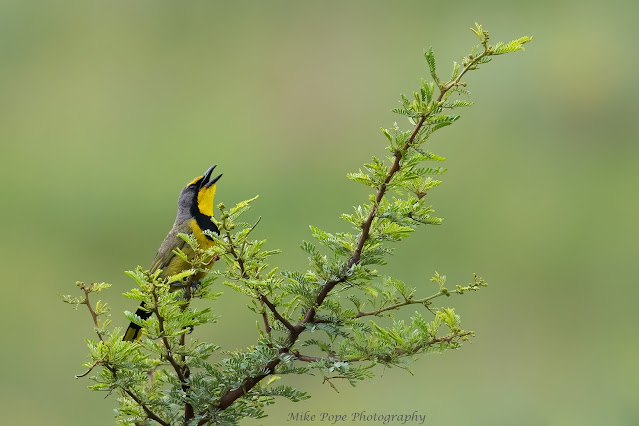11 January 2021 - Suikerbosrand Nature Reserve
It had been more than 2-years since I last visited Suikerbosrand Nature Reserve which is around an hour's drive from where I live and near the town of Heidelberg. The reserve gets its name from the Transvaal Sugarbush or Suikerbos that is found in abundance on the reserve.
It is a high-altitude reserve and forms part of the Vredefort Dome and has a variety of interesting habitats (open grassland, wooded gorges, acacia woodland, marshes and the rare Bankenveld grassland) on the 60km circular route through the reserve. My son was keen to join me on this trip, as our mission was to target Amur Falcon, South African Cliff Swallows and flying Long-tailed Widowbird's.
What we didn't anticipate was the rain all through the night and when we left at 6am in the morning. Fortunately, the rain abated during a coffee stop close to the reserve, but it remained gloomy throughout the time we were there.
Our first stop was for the breeding Cliff Swallows where we managed to get a few images.
 |
| South African Cliff Swallow (Petrochelidon spilodera) |
White-rumped Swift share the same breeding site as the Swallow's
 |
| White-rumped Swift (Apus caffer) |
The dull weather was a real challenge with flying birds against grey skies, so we turned our focus to the male Long-tailed Widowbird's in the same area and managed to get some in flight and display images - but again not ideal.
 |
| Long-tailed Widowbird (Euplectes progne) |
We then headed to the reserve gate and found a few female Amur Falcon's perched on a fence on the side of the road - no males unfortunately.
 |
| Amur Falcon (Falco amurensis) |
After paying the entrance fee, we headed into the reserve and slowly drove the circular route in between bouts of drizzle and strong wind at some of the highest points. There was quite a summer flower show in some areas of the reserve
 |
| Suikerbosrand Flower Show |
I enjoyed getting re-acquainted with many of the birds I hadn't seen for a long time. There were so many Widowbird's in breeding plumage and still attempting to woo the females. We had a few obliging male Red-collared Widowbird's.
 |
| Red-collared Widowbird (Euplectes ardens) |
Along with Fan-tailed Widowbird
 |
| Fan-tailed Widowbird (Euplectes axillaris) |
And a male Pin-tailed Whydah, one of our parasitic species
 |
| Pin-tailed Whydah (Vidua macroura) |
We stopped for a calling and displaying Rufous-naped Lark which closely resembles the Crested Lark I was familiar with in Kuwait.
 |
| Rufous-naped Lark (Mirafra africana) |
I was also hoping to see Bokmakierie and we finally did have one not too far off the road
 |
| Bokmakierie (Telophorus zeylonus) |
Levaillant's Cisticola is the common Cisticola of the reserve, although in the cold damp weather they kept a low profile
 |
| Levaillant's Cisticola (Cisticola tinniens) |
Many other species were seen, but most difficult to photograph due to the inclement weather - so we will certainly need to return again.Obviously, the reserve also has game and in one area of grassland, we enjoyed this male Black Wildebeest, which seemed grieved that we had stopped. A little further on we had a family with a calf
 |
| Black Wildebeest (Connochaetes gnou) |
Along with a few Burchell's Zebra
 |
| Burchell's Zebra (Equus quagga burchelli) |
After leaving the reserve, we stopped before joining the freeway as I had seen soaring White Stork
 |
| White Stork (Ciconia ciconia) |
In the same area, a miserable looking male Southern Masked Weaver
 |
| Southern Masked Weaver (Ploceus velatus) |
and displaying Yellow-crowned Bishop in its typical bumble-bee like flight.
 |
| Yellow-crowned Bishop (Euplectes afer) |
It was then time to head home after an enjoyable morning where we achieved our mission, albeit in crappy weather. So, we will need to return to improve on the images of the species we did see - especially the Swallows and displaying Widowbird's.
































No comments:
Post a Comment